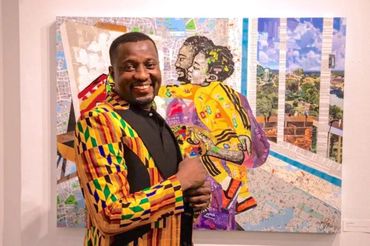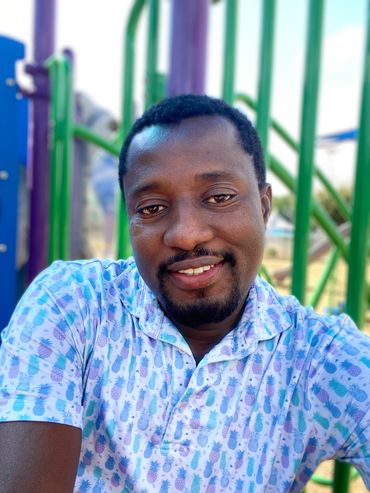BIO
Ghanaian-born artist Tijay Mohammed has showcased his work on both national and international stages, gracing prestigious venues like the Katonah Museum of Art NY, the Hudson River Museum NY, Materials for the Arts NY, Art League, Houston TX, the Green Drake Art Gallery in Pennsylvania, Gallery 1202 CA, Ravel d’ Art in Côte d’Ivoire, and the National Museum of Ghana.
Tijay's impact extends beyond exhibition spaces; he has spearheaded workshops and community-oriented projects for esteemed organizations, including the Studio Museum Harlem, Brooklyn Museum, Sugar Hill Children’s Museum of Art & Storytelling, Children’s Museum of Manhattan, Wallach Art Gallery, Lehman College, University of Ghana, and Pinto Community Centre in Trinidad and Tobago. His contributions have not gone unnoticed, garnering him various accolades and residences from renowned institutions such as The Laundromat Project, Wave Hill, Art Bridge, Materials for the Arts, Harmattan Workshop in Nigeria, Global Crit Clinic, and Asiko Artist Residency in Ghana. Grants from institutions like the Arts Fund, the Bronx Council on the Arts’ Artist for Community and New Work grant, and the Spanish Embassy Ghana Painters Award further attest to his artistic prowess.
The artist currently resides in the Bronx, NY, and maintains a studio in Ghana that serves as a sanctuary for visiting artists to interact with residents, promoting multicultural dialogue through story circles and art workshops.
Artist Statement
As an artist, I am driven by a passion for exploring issues that impact my community and humanity, and my work focuses on the concept of 'excess' in production and consumption, offering a solution through materials reuse and up-cycling.
Through multimedia collages, site-specific installations, mixed media paintings, and public sculptures, I reimagine waste as valuable materials, revealing the aesthetic and conceptual beauty of discarded items and challenging the notion of their worthlessness. I create poetic representations of pressing issues like migration, childcare, gender, social, and environmental justice by repurposing everyday objects, such as fabric scraps, metro cards, jewelry, paper, and photographs. Through this process, I promote recycling as a response to climate change.
My creative process is deeply rooted in history, as I reinterpret objects and stories to evoke a sense of nostalgia for place, time, and utopian cultures, while acknowledging the complexities of African and African American experiences.
As a futurist, I am committed to making a positive impact in any community I am a part of, for the benefit of current and future generations through an interactive approach, commitment to community, self-love, and appreciation, inspired by the Ghanaian Adinkra symbol 'Sankofa,' which means 'learning from the past to ensure a prosperous future.'
Headshots





